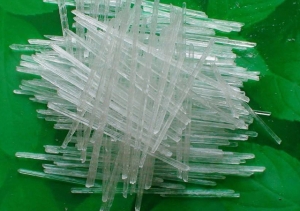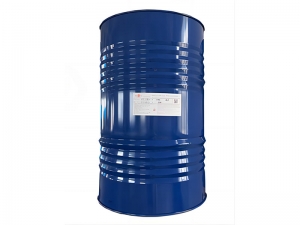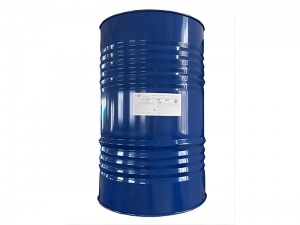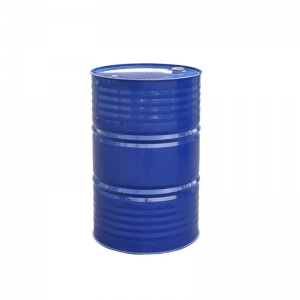
-
m-Cresol CAS NO.108-39-4
Product details m-Cresol CAS NO.108-39-4 Payment:T/T Min order:1000kgs Lead time:7-15 daysTags : Intermediate m-Cresol m-Cresol CAS NO.108-39-4 m-Cresol CAS NO.108-39-4 m-Cresol supply m-Cresol raw material supply
-
p-Aminobenzamide CAS NO.2835-68-9
Product details p-Aminobenzamide CAS NO.2835-68-9 Payment:T/T Min order:1000kgs Lead time:7-15 daysTags : p-Aminobenzamide intermediate Wholesale p-Aminobenzamide p-Aminobenzamide solid p-Aminobenzamide 25kg/bag p-Aminobenzamide supplier Manufacture of p-Aminobenzamide
-
N-(p-Aminobenzoyl)glutamic acid CAS NO.4271-30-1
Product details N-(p-Aminobenzoyl)glutamic acid CAS NO.4271-30-1 Payment:T/T Min order:1000kgs Lead time:7-15 daysTags : N-(p-Aminobenzoyl)glutamic acid CAS NO.4271-30-1 intermediate N-(p-Aminobenzoyl)glutamic acid Hot sale N-(p-Aminobenzoyl)glutamic acid N-(p-Aminobenzoyl)glutamic acid powder N-(p-Aminobenzoyl)glutamic acid supplier
-
Ethyl bromodifluoroacetate CAS NO.667-27-6
Product details Ethyl bromodifluoroacetate CAS NO.667-27-6 Payment:T/T Min order:1000kgs Lead time:7-15 daysTags : Ethyl bromodifluoroacetate CAS NO.667-27-6 Wholesale Ethyl bromodifluoroacetate Ethyl bromodifluoroacetate CAS NO.667-27-6 Ethyl bromodifluoroacetate liquid Ethyl bromodifluoroacetate 25kg/drum
-
Piperonyl-butoxide CAS NO.51-03-6
Product details Piperonyl-butoxide CAS NO.51-03-6 Chemical Name: 3,4-methylenedioxy-6-propyibenzyl-n-buty diethyleneglycolether Appearance: cololess to light yellow oil liquid Formula: C19H30O5 Molecular Weight: 338.43 Boiling Point:180℃/133.3PaTags : Manufacture of Piperonyl-butoxide Piperonyl-butoxide supplier Piperonyl-butoxide raw material Wholesale of Piperonyl-butoxide Piperonyl-butoxide liquid Hot sale Piperonyl-butoxide
-
Wholesale Bulk Direct Blue 86 CAS 1330-38-7
Name: Direct Blue 86 Other Name: C.I. 74180; C.I. Acid Blue 87; C.I. Direct Blue 86; C.I. Direct Blue 86 (6CI); CI 74180; Lionol blue GS; Lionel blue GS; Direct blue 86; Direct Blue 86; Direct Fast Turquoise Blue GL CAS No.: 1330-38-7 Appearance: Dark blue powder Molecular formula: C32H14CuN8Na2O6S2 Molecular Weight: 780.16Tags : C.I. Acid Blue 87 CAS 1330-38-7 C.I. 74180 CAS 1330-38-7 Direct Blue 86 CAS 1330-38-7 Lionolblue GS CAS 1330-38-7 Direct Blue 86 Colourant CAS 1330-38-7 Dye Factory Direct Blue 86 CAS 1330-38-7
-
Menthol CAS NO.15356-70-4 Chinese Supplier
Name: Menthol CAS No.: 15356-70-4;98167-53-4;89-78-1;1490-04-6 Appearance: Colourless, transparent hexagonal or needlelike crystals. Solubility: This product is highly soluble in ethanol, chloroform, or ether, and only slightly soluble in water. Specific rotation:- 49°~-50° Melting point: 42~44℃ Boiling point: 212 ℃ Flash point: 93 ℃ Refractive index: 1.4615 Solubility: insoluble in ethanol, 95% ethanol, ether, and water; Slightly soluble in hot benzene and 95% ethanol. Application category: Menthol is widely used in inhalants, oral suspensions, oral syrups, topical preparations, and tablets.Tags : Menthol CAS NO.15356-70-4 DL-Menthol CAS NO.15356-70-4 l-Menthol CAS NO.15356-70-4 Racementhol CAS NO.15356-70-4 Mentholun racemicum CAS NO.15356-70-4 dl-Menthol CAS NO.15356-70-4
-
Liquid BPA Type Epoxy Resin NPEL128S CAS NO.61788-97-4
Name: Liquid BPA Type Epoxy Resin CAS No.: 61788-97-4 Appearance: Colorless transparent liquid Specifications: NPEL128S EEW: 212g/eq Hy-Cl:20199ppm Viscosity:21766cps/25℃ Product Features: Excellent electrical and mechanical properties, low shrinkage rate, good dimensional stability, excellent water and chemical resistance, and strong adhesion. Application category: Adhesive, electric coating, solvent-free coating.Tags : Liquid BPA Type Epoxy Resin NPEL128S CAS NO.61788-97-4 Liquid BPA Type Epoxy Resin CAS NO.61788-97-4 Epoxy resins CAS NO.61788-97-4 Low molecular weight epoxy resin Medium molecular weight epoxy resin High molecular weight epoxy tree wax
-
Ortho Formaldehyde Epoxy Resin NPCN704 CAS NO.61788-97-4
Name: Ortho Formaldehyde Epoxy Resin CAS No.: 61788-97-4 Appearance: Colorless transparent liquid Specifications: NPCN704 Softening Poin: 91.6℃ ICI Viscosity:2974cps/150℃ Product Features: excellent heat resistance, chemical resistance, and high mechanical strength. Application category: EMC, composite materials, copper foil laminates, ink.Tags : Ortho Formaldehyde Epoxy Resin CAS NO.61788-97-4 Epoxy Resin CAS NO.61788-97-4 Heat-resistant epoxy resin CAS NO.61788-97-4 Chemical resistant epoxy resin CAS NO.61788-97-4 High mechanical strength epoxy resin CAS NO.61788-97-4 Epoxy resin supplier, manufacturer, trading company
-
Solid BPA Type Epoxy Resins NPES901 CAS NO.61788-97-4
Solid BPA Type Epoxy Resins NPES901 CAS NO.61788-97-4 Name: Solid BPA Type Epoxy Resins CAS No.: 61788-97-4 Appearance: Colorless transparent liquid Specifications: NPES901 Softening Poin: 68.7℃ Product Features: Good water and chemical resistance, strong adhesion. Application category: Powder coating, can coating, and coil steel coating.Tags : Epoxy Resins CAS NO.61788-97-4 CAS NO.61788-97-4 Epoxy - Polyester Resin CAS NO.61788-97-4 Epoxy resin CAS NO.61788-97-4 PICHLOROHYDRIN RESIN CAS NO.61788-97-4
-
2-Hydroxy Ethyl Methacrylate CAS: 868-77-9
Hydroxyethyl methacrylate (HEMA) is a non-toxic, harmless, and widely used reagent, commonly used for soft lens materials, lens materials, or as a monomer for preparing dense ceramics and glass. Polyhydroxyethyl methacrylate (PHEMA) is a promising biopolymer with significant inertness, biocompatibility, and insolubility. Method 1: Place 100 ml of toluene, 62.1 (1 mol) parts of ethylene glycol, and enzymes (Novozym 435, 0.04 parts, 0.01 parts of sodium carbonate, and 0.01 parts of hydroquinone manufactured by Novo) into a 1-liter glass flask connected to a cooling tube receiver (for measuring moisture) and a reflux side tube, and heat to 40 ° C. 72.1 parts (1mol) of acrylic acid were added in batches within 10 minutes, while stirring step by step. After completing the total addition, the mixture was stirred at the same temperature under reduced pressure of 10mPa. After the reaction, the target acrylate was obtained by filtering and separating the catalyst and additives. The time required for the reaction is approximately 6 hours. The yield and composition of the obtained acrylate were determined by gas chromatography (hereinafter abbreviated as GC). [0044] [Example 2] [0045] Except for changing 72.1 parts (1 mol) of acrylic acid to 86.1 parts (1 mol) of methacrylic acid in Example 1, the target compound was obtained in a similar manner to Example 1. The time required for the reaction is approximately 5 hours. The yield of hydroxyethyl methacrylate (HEMA) was 98.5% by gas chromatography. The synthesis is continuous as shown in Figure 1. Method 2: Add 31.05g ethylene glycol (EG, 0.5mol), 47.35g (0.55mol) methacrylic acid, 40g (inside, 22g water in the catalyst before use, 18g dry weight) strong acid ion exchange resin (Amberlite IR124: gel type, 12% cross-linking degree, no pore), 0.086g HO-TEMPO, 0.086g hydroquinone and 200g toluene into a 500ml glass flask equipped with Dean Stark device, cooling pipe, thermometer and air inlet pipe, Then heat and stir at 100 ℃, while using a pump to add water at a rate of 2g/h. The water formed in the reaction is azeotropic with toluene and removed through the Dean Stark device. After 5 hours, the conversion rate of hydroxyethyl methacrylate was 87.3%. The synthesis is continuous as shown in Figure 1. purpose Hydroxyethyl methacrylate is mainly used for modifying resins and coatings. Copolymerization with other acrylic monomers can produce acrylic resins with active hydroxyl groups in the side chains, which can undergo esterification and crosslinking reactions, synthesize insoluble resins, improve adhesion, and can be used as fiber treatment agents. It reacts with melamine formaldehyde (or urea formaldehyde) resin, epoxy resin, etc. to manufacture two component coatings. Adding it to high-end car paint can maintain the mirror gloss for a long time. It can also be used as an adhesive for synthetic textiles and as a medical polymer monomerTags : 2-Hydroxy Ethyl Methacrylate CAS: 868-77-9 C6H10O3 HEMA
-
2-Hydroxypropyl methacrylate
nature Hydroxypropyl methacrylate (HPMA) is a commonly used polymer material. 1. Appearance: The appearance of hydroxypropyl methacrylate is a colorless transparent liquid 2. Solubility: Soluble in water and also in most organic solvents, such as alcohols, ethers, esters, and aromatics. 4. Density: The density of hydroxypropyl methacrylate is 1.11-1.18 g/cm3. 6. Chemical stability: It has good chemical stability, is not easy to decompose, and will not react with most chemical substances. 7. Thermal stability: Hydroxypropyl methacrylate has good thermal stability, and its thermal stability is relatively high at high temperatures. 8. Oxidation stability: It has a certain resistance to oxidation and is not prone to oxidation and deterioration. Preparation 1. Add initiators such as hydroxypropyl methacrylate (HPMA) and hydrogen peroxide to the reactor, as well as an appropriate amount of solvents (such as methanol, ethanol, etc.). 2. Seal and shake the reaction kettle or heat it to react, causing the initiator to crack at an appropriate temperature, resulting in free radical polymerization of HPMA. After the reaction is completed, precipitate or precipitate the product with acidic water or organic solvents. 4. Filter and collect the product, wash and dry to obtain the pure product. The above is a simple preparation process for hydroxypropyl methacrylate, and the specific operating parameters and process flow may vary depending on different preparation methods and requirements. application 1. Paint and ink industry: it can be added to paint and ink as lotion and diluent to improve its viscosity, rheology and adhesion. 2. Cosmetics: Can be used in cosmetic products, such as hair gel, curling agents, sunscreen, etc., to thicken, moisturize, and prevent sun damage. 3. Daily necessities: It can be added as a thickener to daily necessities, such as detergents, facial cleansers, toothpaste, etc. 4. Pharmaceutical field: It can be used in drug sustained-release systems, such as artificial joint lubricants or eye drops for injection. In the future, with the continuous development of technology, the application prospects of hydroxypropyl methacrylate will become increasingly broad. For example, in the fields of biomedicine and drug delivery, cell delivery, and the preparation of nanomaterials, polymer materials such as hydroxypropyl methacrylate are also useful
 call us :
call us :  send a message :
send a message : 





























 online service
online service +8613866722531
+8613866722531

 +8613866722531
+8613866722531